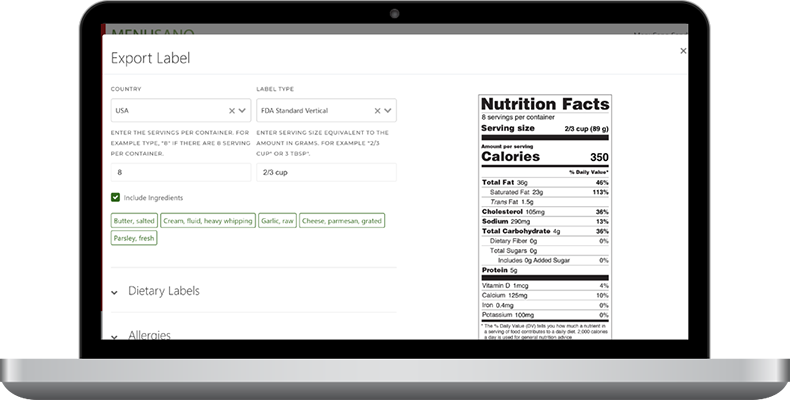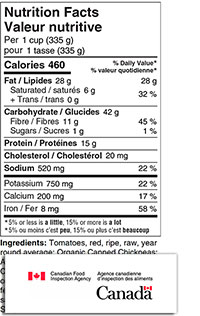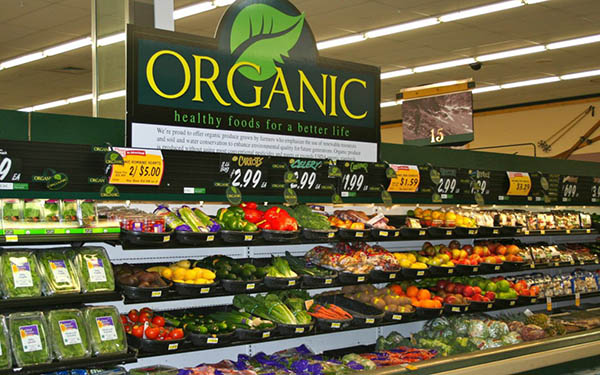Original Publish Date: June 1, 2018
Food labeling is one of the most essential components of any food-based industry. Beyond transparency, it allows people to determine, choose, and upkeep their dietary needs and health plans.
The Food and Drug Administration (FDA) has a proper guideline for food labeling undertaken by the Federal Food, Drug, and Cosmetic Act. The main rule is simple: all the nutritional value should be mentioned for every prepared and packed food items, including bread, canned products, frozen items, cereals, snacks, drinks, desserts, etc. The FDA also provides regular guidance to the food industry for any addition or deletion of information in the labeling, depending upon the nature of the item.
In Canada, the Canadian Food Inspection Agency (CFIA) is responsible for outlining food labeling regulations and additional information for Canada’s labeling requirements. Adherence to these standards further helps the general public get comfortable with the nutritional facts when selecting and purchasing food items for their family.
Basic Parameters Of Nutrition Facts Labels
Nutrition facts labels help to maintain better eating habits and aid in attaining a balanced energy level.
Foods high in sugar and fat content tend to be more palatable and therefore become favorite staples, so it’s even more important to be aware of their nutritional output. Choosing between these or other options to switch out for a more healthy option or to portion control is essential.
The basic importance of nutrition facts labels is to promote the selection of foods that help manage a vast array of diets and nutritional needs.
The basic parameters which are required for the use of nutrition facts labels are as follows:
Serving Size and Calorie Content
In nutritional facts labels, one of the foremost things that require a look are serving sizes, as these guide the process. This signifies the number of serving in that particular package. If the package contains multiple servings, the nutritional fact label also mentions the detailed nutritional information per serving. This makes it easy to calculate the calorie intake as well as Percent Daily Value of each nutrient. Percent Daily Value denotes per day requirement of a particular nutrient.
Calorie Sources
Calories aren’t just calories, they’re energy and their source matters and varies greatly. From health benefits to food allergies, whether it be protein, fat, or carbohydrates, this information is considered vital. Depending on lifestyle or diet, a body needs different caloric intakes and these may differ wildly.
Experts suggest that one should maintain total daily caloric intake that is between 20% and 35%.
Added Sugar Content
Added sugar content increases the calorie levels without adding any health benefits. It is key to check the nutritional food label for the information about any added or natural sugar levels. There are foods naturally high in sugar, foods that are expected to be high in sugar, and foods that normally should not have any but do.
Nutrition facts labels do the best job possible to alert the customer to the sugar content in the produce they’re considering.
Type of Fat Present
The chemical nature of fat is varied and how it is metabolized changes depending on many factors. A food label will allow you to understand if the fat is good, healthy fat or saturated or trans fat.
Any food items which contain more than 20 Percent Daily Value or higher are considered a high-fat food, whereas 5 Percent Daily Value or lower are considered low-fat foods.
Sodium Intake
High Sodium intake i.e. more than 2,300 milligrams (almost one teaspoon of salt) increases the risk of hypertension. Processed food items are often a rich source of sodium, so the nutritional information assists in calculating the exact sodium value for the day.
Importance of Nutritional Facts Labels
Nutritional facts labels provide information on the food we choose to eat and feed to others. Their importance stems from everyday people being able to make educated choices on their own health and tailor their options to fit their needs and desires.
In a restaurant setting, it’s very much a similar tone. Customers pick and feel good about their choices based on the given information. Today, finding a menu without a calorie count is not only hard, but frowned upon by patrons. Transparency is important now more than ever.
Nutrition Facts Label Software
As the public understanding of health and food grows, so too does the need for labels on what people eat. Health is a growing concern in this generation, and control over what is being consumed and how people choose to nourish their bodies is becoming evidently standard.
Menusano is a tool designed to do exactly what your customers crave; a meal that begins with their health in mind. Generating nutrition facts labels for your food has never been simpler. Try it now free.




















